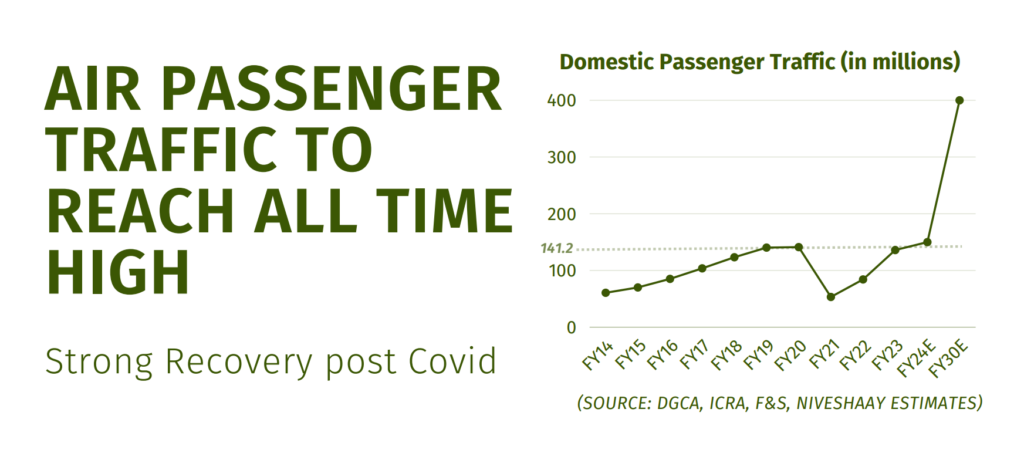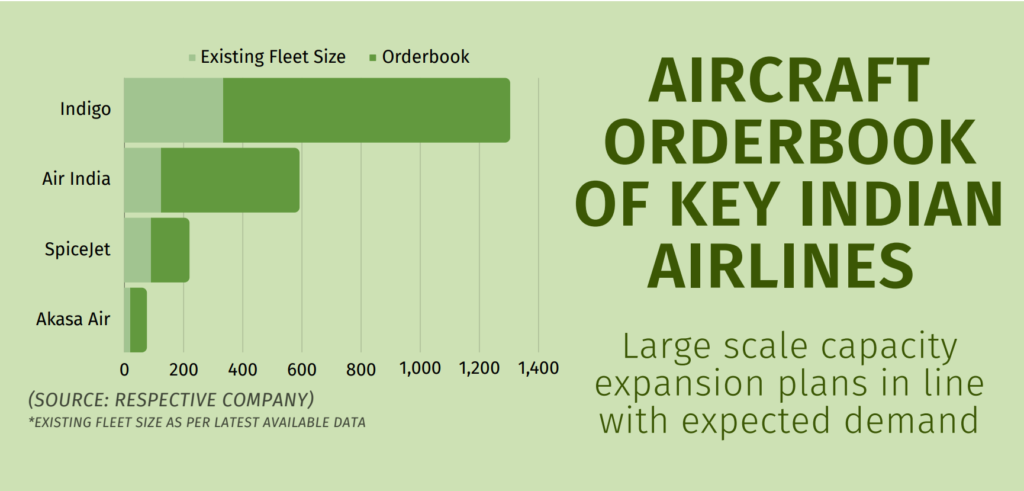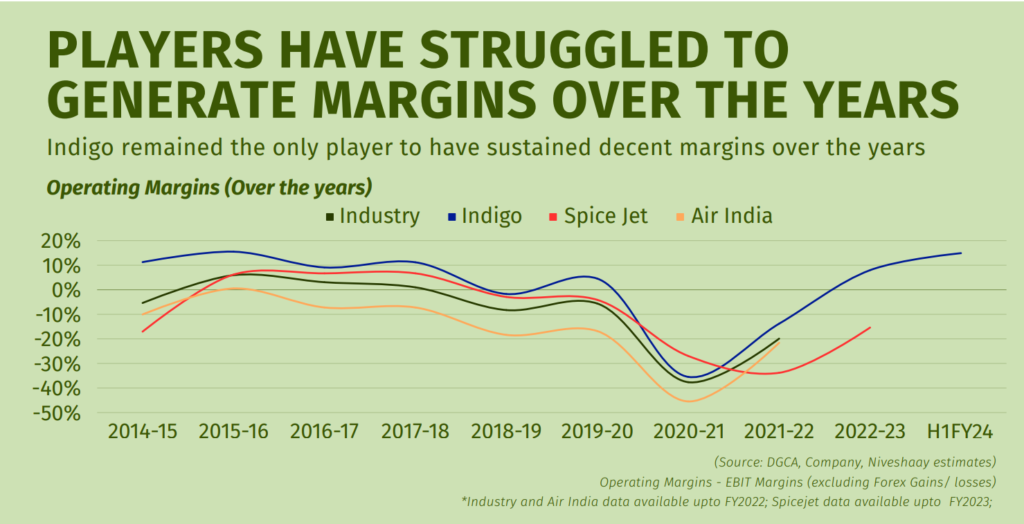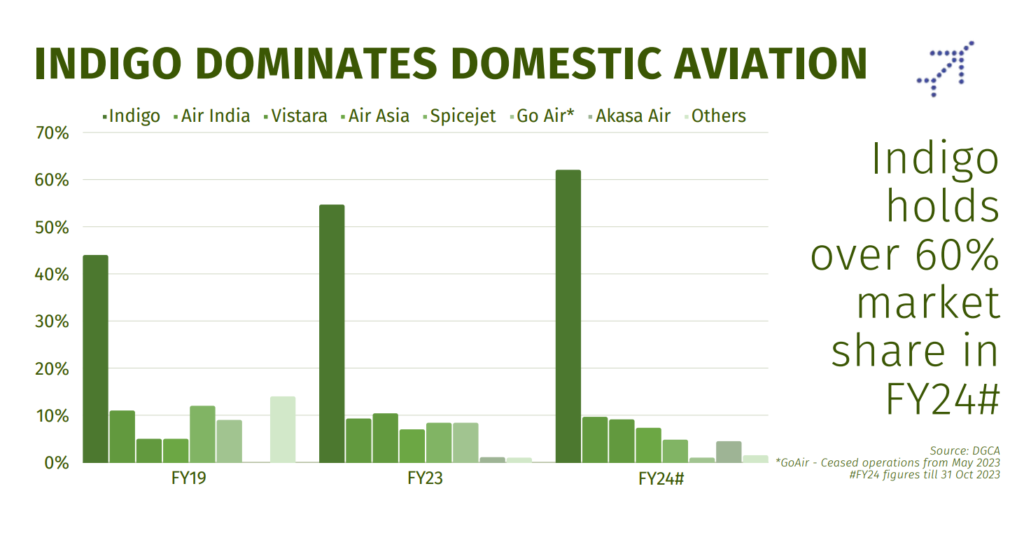Indian Aviation Industry Ready to Take-Off ?
November 21, 2023 | Industry Insights

Over the years, the aviation industry has witnessed numerous challenges aggravated by persistent stings of economic slowdowns, crude shocks and COVID-19 lead standstill. Despite these serious challenges, the Indian market has emerged as the third-largest and fastest-growing aviation market in the world, growing at almost 10 percent for the last decade, almost 2.5 times the global average.
As the echoes of the COVID-19 standstill gradually fade, a notable shift emerges in the Indian aviation landscape. Once an aspirational luxury is now transforming into an indispensable convenience, ushering in a new era for the industry led by numerous factors.


A brief glimpse of the apparent tailwinds is highlighted in the graphic above:
- Domestic air passenger traffic has nearly tripled in the last 10 years, surging to 141.2 million departures in FY20. Industry experts expect a continued upward trajectory, with air passenger traffic projected to reach 150 million departures in FY24. Looking ahead, it is expected to grow by 2.6 times reaching 400 million departures in FY30. This impressive growth is attributed to key factors such as rapid urbanization, rising incomes, bolstered infrastructure, and improved accessibility.
- Over the past decade, the cost per kilometer at constant purchasing power of an air trip has decreased substantially by 53% (from Rs. 7.38 to Rs. 4.8) vis-à-vis railway first-class fare which has reduced marginally by 24% (from Rs. 4.46 to Rs. 3.59), thereby making air trips more accessible.
- In the past decade (FY14 to FY23), Indian airlines witnessed significant capacity growth:
- Available Seat Kilometers (ASK = Seats available x Distance Flown) capacity nearly doubled, reaching 158 billion km from 81 billion km.
- Revenue Passenger Kilometers (RPK = Seats occupied x Distance Flown) surged 2.2 times, climbing from 59 billion km to 132 billion km, indicating a substantial increase in passenger demand.
- Passenger Load Factor (PLF = RPK ÷ ASK) showed impressive improvement, rising over 1000 basis points from 73.27% to 83.54%, highlighting enhanced aircraft capacity utilization.
On top of this, further capacity expansion plans of industry leaders like Indigo with close to 1000 aircraft on order, Air India with over 500 aircraft on order, and newcomer Akasa Air with over 50 aircraft on order signal robust demand expectations for the upcoming decade.


Established players, having weathered tough times, are set to benefit from favorable conditions.
Indigo, a standout performer for the past decade, boasts a dominant position in India's airspace, with over 60% domestic and 17% international market shares. Operating the youngest fleet (average age of 3.5 years) in the 100+ aircraft category and employing the Hub and Spoke model for high-faring routes, Indigo maintains high operational efficiency, ensuring stable margins compared to other airline players.
With an established market leadership position and the aviation sector's positive momentum, Indigo appears poised to capitalize on these tailwinds and extend its lead.
Part two delving deeper into the favorable economics of Indigo and its strategies that have propelled its growth over the years to be posted soon. Stay tuned.
Disclaimer:
Investment in securities market are subject to market risks. Read all the related documents carefully before investing. The content in these posts/articles is for informational and educational purposes only and should not be construed as professional financial advice and nor to be construed as an offer to buy /sell or the solicitation of an offer to buy / sell any security or financial products.
Registration granted by SEBI, membership of BASL and certification from NISM in no way guarantee performance of the intermediary or provide any assurance of returns to investors.
The securities quoted are for illustration only and are not recommendatory.


 Follow
Follow